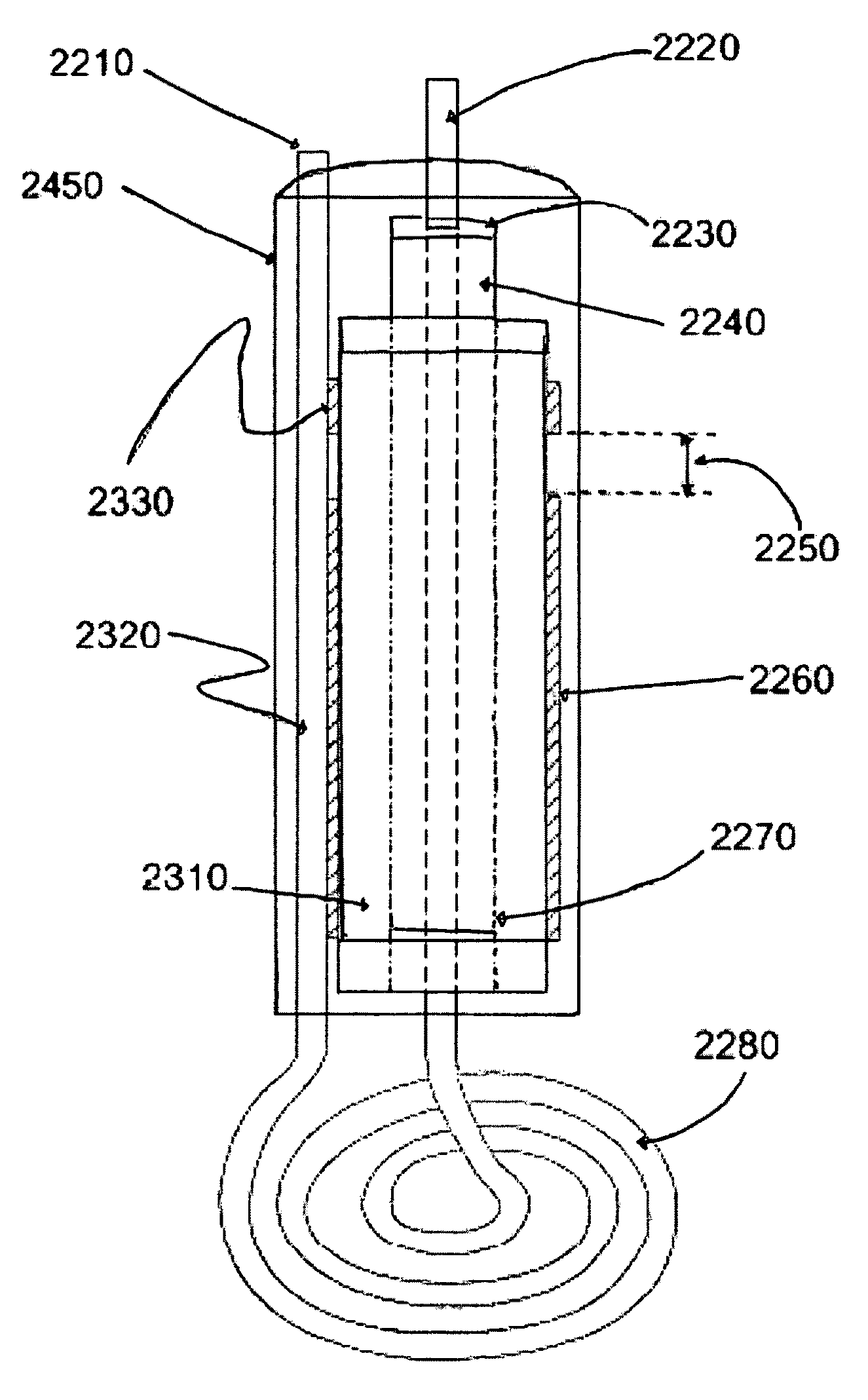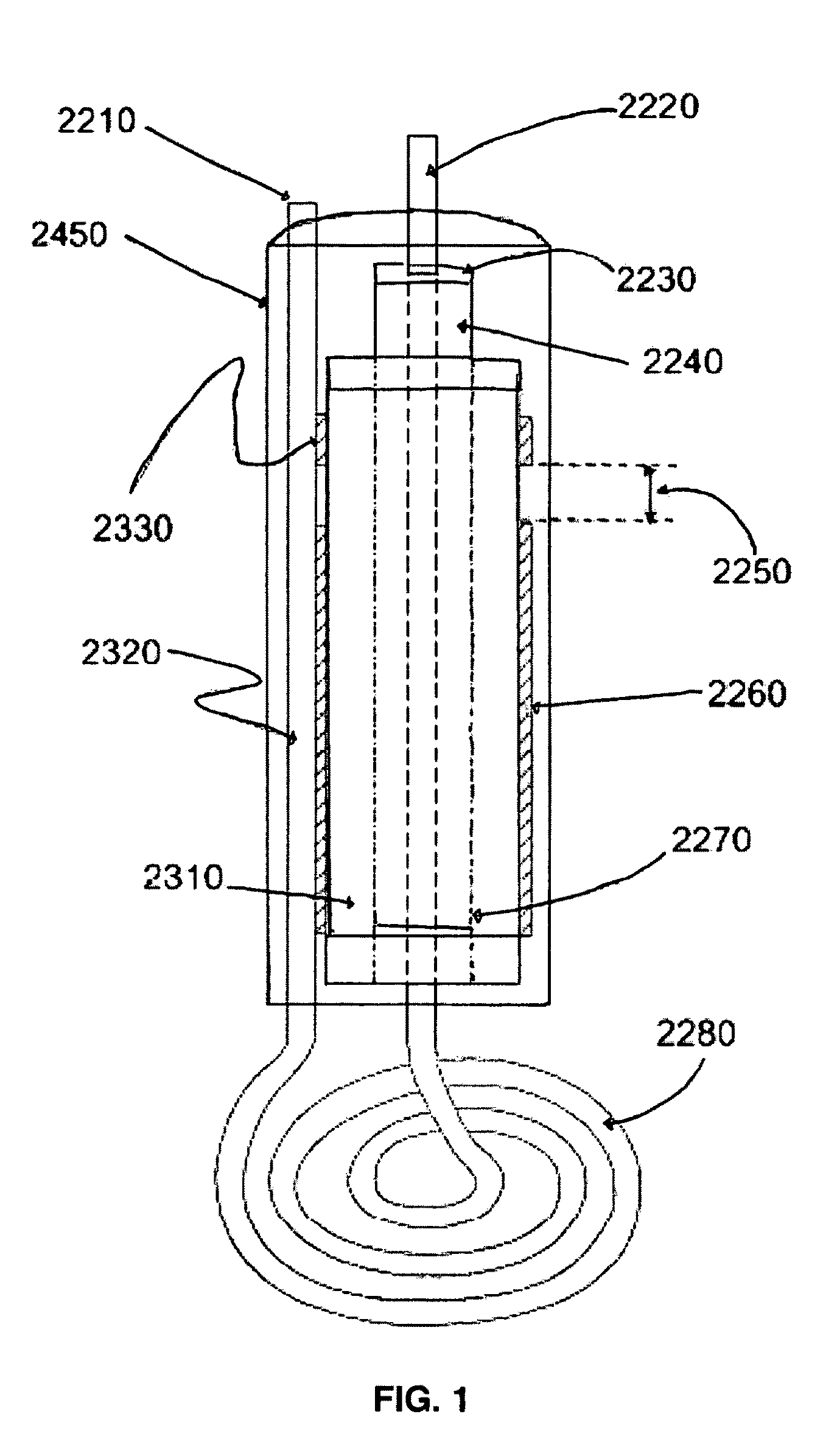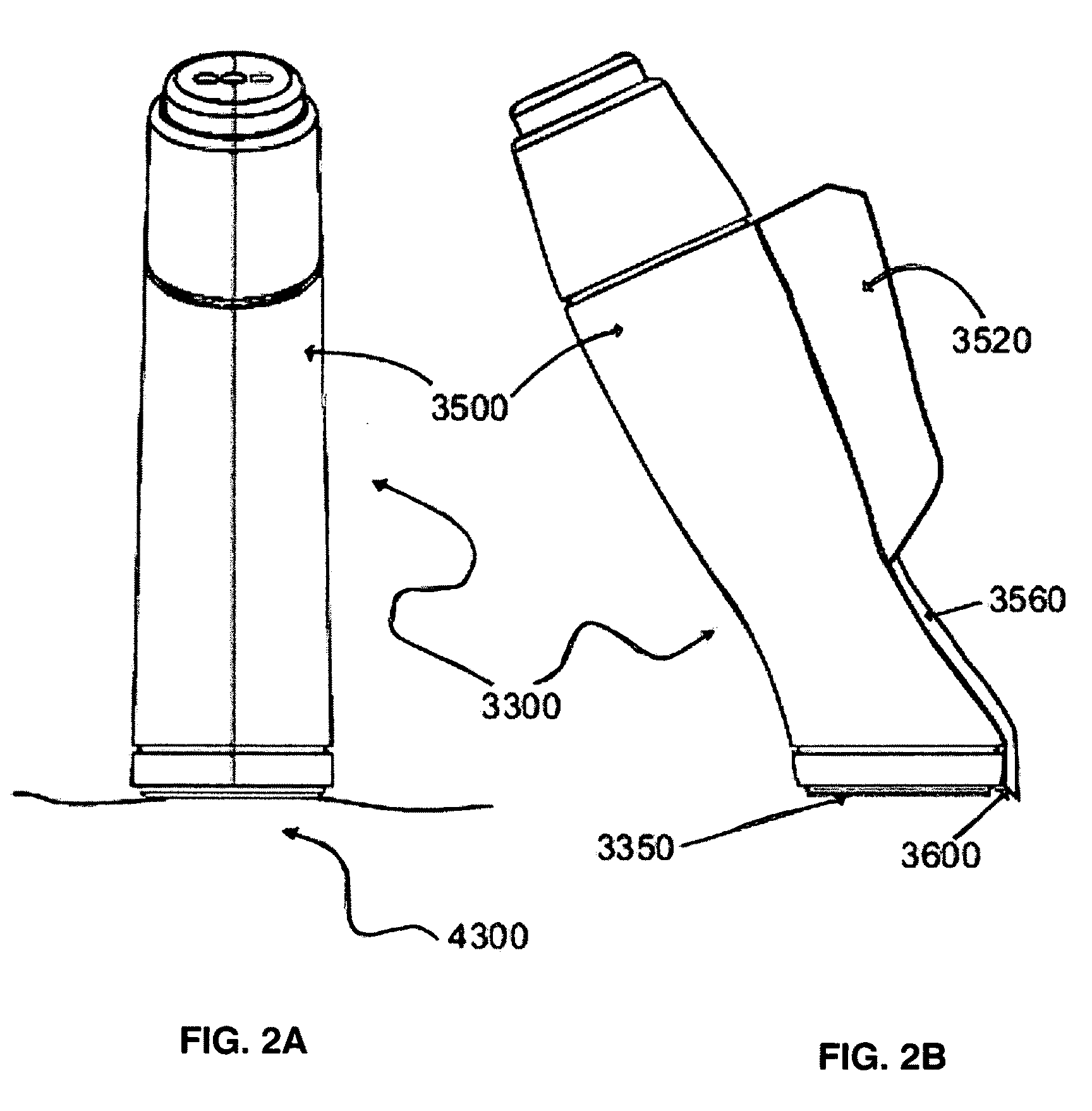Inductive heating of tissues using alternating magnetic fields and uses thereof
a tissue heating and alternating magnetic field technology, applied in the field of biomedical engineering, biochemistry, medical treatment, surgical procedures, etc., can solve the problems of skin furrowing, skin damage, and skin damage, and achieve the effect of reducing the number of patients
- Summary
- Abstract
- Description
- Claims
- Application Information
AI Technical Summary
Benefits of technology
Problems solved by technology
Method used
Image
Examples
example 1
Applicator
[0079]The pancake coil is made from 3.5 turns of 0.125″ OD copper refrigeration tubing and has a diameter of 1.4″. The coil must be hollow tubing to allow water or other cooling fluid to flow through it and dissipate the ˜500 W of heat generated. The main capacitor (FIG. 1, 2260) has a value of ˜70 pF which resonates with the coil at 40.68 MHz (FIG. 5). Earlier prototypes were made with a Teflon dielectric (Kr=2.2), but the size of the capacitor became too unwieldy to use in a handheld device. Capacitance can be calculated using the formula for a cylindrical capacitor: C=(2 π*Kr*μo) / I(n(b / a)), where, C=capacitance in pF per unit length, Kr=dielectric constant (9.8), μo=permittivity of free space=8.85 pF / m, b=outer diameter, a=inner diameter
[0080]The length of the capacitor is inversely proportional to the Kr of the dielectric used, so alumina was chosen for its high Kr and its other desirable properties: Good thermal conductivity—30 W / m*K; High dielectric strength—200 ACV / ...
example 2
Tissue Tightening In Vitro
[0093]Ovine and human tissue samples were cut into 2 cm×2 cm sections and inductively treated using 400 W power generated from a an ENI 6B power supply operating at 13.6 MHz. The coil was 2 cm in diameter and placed 2 mm from the tissue. Exposure was for 20-30 seconds. Samples of lung, artery, and skin demonstrated macroscopic shrinkage of approximately 5-20% depending on length of exposure. Skin and lung samples were placed in formalin and evaluated by thin section histology. Examination of Mason-trichome stained sections demonstrated that collagen fibrils were packed more closely together in the treated versus untreated sections.
[0094]FIG. 6 shows measurements taken at 27 MHz and 600 W. Bovine muscle, bovine fat, ovine skin, and human blood were used for comparison. The tissues were cut to 2×2˜5 cm samples. Each sample was placed directly on the cap of the 27 MHz device and imaged from above with a Raytek IR thermometer. The device was activated and the t...
example 3
Tissue Tightening and Dermal Thickening In Vivo
[0096]Rat skin was treated with the coil device at 40 MHz and 350 W power delivery. The device was held juxtaposed to the skin of anesthetized rats until visible shrinkage was evident without cooling (treatment time tt=24 seconds), with cooling (that is, with the refrigerant circulating through the coil and endplate, tt=29 seconds) and at tt=27 seconds. A grid was drawn on the back of the animal prior to treatment and was photographed before and after treatment and on post op day one. The image was digitized and the grids were compared down to the pixel for acute shrinkage. The treatment site was biopsied on post op day two for acute wound response and on post-treatment day 21 to ascertain collagen deposition. Temperature of the epidermis was also measured following treatment. After treatment, the temperature of the surface of the skin was at or around 42° C.
[0097]By measuring the distance between the gridlines on the skin, it was possi...
PUM
 Login to View More
Login to View More Abstract
Description
Claims
Application Information
 Login to View More
Login to View More - Generate Ideas
- Intellectual Property
- Life Sciences
- Materials
- Tech Scout
- Unparalleled Data Quality
- Higher Quality Content
- 60% Fewer Hallucinations
Browse by: Latest US Patents, China's latest patents, Technical Efficacy Thesaurus, Application Domain, Technology Topic, Popular Technical Reports.
© 2025 PatSnap. All rights reserved.Legal|Privacy policy|Modern Slavery Act Transparency Statement|Sitemap|About US| Contact US: help@patsnap.com



